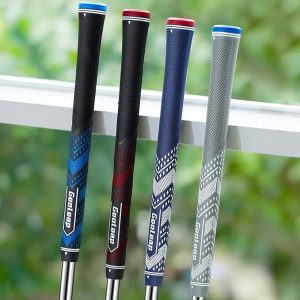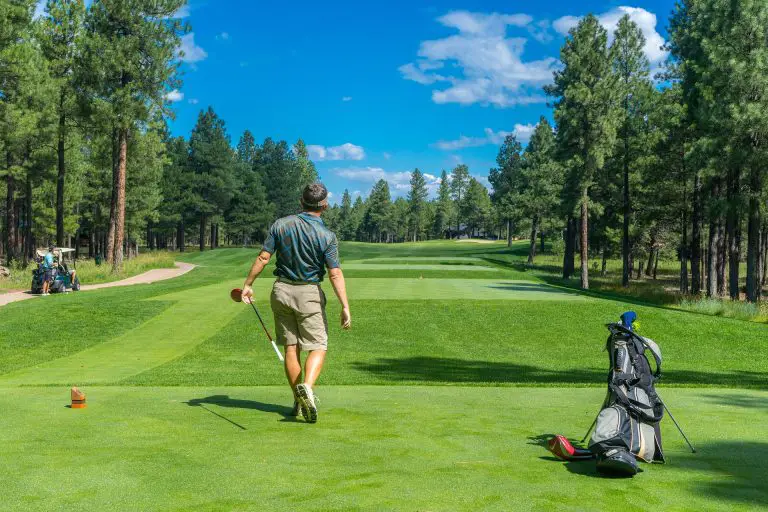Your own putting Green! Real or Artificial Grass?
For any avid golfer, having a dedicated outdoor putting green in your backyard is the ultimate dream. No more wasted time driving to the course, dealing with crowds, or squeezing in rushed sessions. Instead, you can simply step outside your door and work on your short game anytime.
While building a backyard golf green may seem like an extravagant undertaking, the truth is it’s quite achievable, even for the average homeowner. All you need is a little bit of space, the right materials, and a willingness to put in a weekend’s worth of work. The end result? Your very own personal putting and chipping oasis that will pay dividends for your golf game.
Why Choose Natural Grass Over Artificial Turf? While artificial turf putting greens have their advantages in terms of ease of installation and maintenance, there’s something to be said for the authentic feel and playing experience of a natural grass green. The texture, ball roll, and overall aesthetics of real grass simply can’t be replicated by synthetic materials.
Not to mention, a natural grass backyard green provides a more comfortable, cooler environment during the hot summer months compared to artificial turf backyards will be a little bit hotter due to gravel under artificial turf.
If you’re willing to put in the work to maintain it, a real grass green can last for years with proper care.
Of course, the downside is that natural grass requires more hands-on upkeep like mowing, fertilizing, watering, aerating, and so on. But for many golfers, that’s a small price to pay for the authentic golfing experience. And if you’d rather not deal with the maintenance yourself, you can always hire a local landscaper to handle the dirty work for you.
Table of contents
- Step 1 Putting Green Tools
- Step 2 Choose a location
- Step 3 putting green grass
- Step 4 Get location ready
- Step 6 putting green cup
- Step 7 slops and compaction
- Step 8 Laying the putting green sod
- Step 9 Putting green maintenance
Step 1 Putting Green Tools
These are some of the tools that you will need to help your project go smoothly.
- Sod cutter (For easy sod removal)
- water-filled lawn roller
- shovel
- rake
- wheelberrow
- marking paint and string
- drainage pipe
- 4” PVC pipe( for temp cup marking)
Step 2 Choose a location
The first step in creating your backyard putting and chipping green is to carefully plan out the space and find a good location for your green. Natural grass needs an open area that gets a good amount of sunlight and has good drainage. Second measure the area you have available and decide on the ideal size and shape for your green. (to keep all parties in the family happy make it blend into your backyard so the backyard is multi-use). A standard putting green is usually around 300-600 square feet, while a chipping green might be in the 12’x12′ range.
Step 3 Putting Green Grass
The fun part is picking the right bent grass to go on your green and the grass to go around the collar of your green( the ring of grass that goes around the green that separates the green from fairway grass or your yard). You need to find the grass that is native to your area’s climate and growing conditions for instance the amount of sunlight, local temperature, rainfall, and soil condition. Don’t worry the local sod farm will be able to help you out with this and supply you with the sod you should lay.
Step 4 Get location Ready
Once you’ve mapped out the dimensions by painting an outline on the ground of shape and elevation, clear the area of any existing turf, weeds, or debris. This gives you a clean slate to work with. Then you want to take a close look at the current soil condition where your putting green will go. The ideal condition would be sandy loam soil for good drainage, but grass can grow in many types of soil. If the soil contains too much clay, this could be a problem due to lack of drainage. Remove any turf from the planned green location and rake away rocks and other debris.
Step 5 Drainage and Soil
It’s a wise choice to spend a little more money and add drainage to your putting green. This can help to guarantee the structure and life of your putting green and chipping green by keeping unwanted moisture away. Dig trenches that run from the edge of your green through the middle. The trench should slope downward and away from the green to carry away any excess water. (You will want to add perforated pipe for drainage and filter cloth for extra drainage to take the water away from the sod).

Then I would recommend installing good sandy loam topsoil according to USGA requirements this will help with good growing conditions. USGA recommends 6” – 12” of topsoil with drainage under depending on usage and surrounding soil conditions.
Step 6 Putting Green Cup
Installing the putting green temporary cup will give you a good idea if you like the layout before you install your sod. I always like to see two cups unless you’re short on space in your backyard. Place a golf gall in the center of the location you want to cup to be and then cut a four-inch by four-inch long pvc pipe to place in the ground until the sod is laid this is just for the hole layout of the putting green. The rest of the work can be done later.
Step 7 Slops and Compaction
This would be a good time to roll your soil to make sure it has a hard base for the sod to lay on. You don’t want to be walking on your new soil base and leave dents under your new sod.
This will sound strange but I would recommend doing a dry run on the dirt and shoot a couple of putts and seeing if you like the slops to each hole. Is your putting green too easy or what other things would you like to see? This would be the right time to make some small tweaks like adding a sand trap or two or a chipping green. Most people have a hard time visualizing their putting green from drawings and then seeing it laid out can give a different feeling.
Step 8 Laying The Putting Green Sod
Laying the Turf and Finishing Touches With the groundwork laid, it’s time to install your sod. Be sure to carefully measure and cut the pieces to fit the contours of your designated green area.
Once the putting green turf is in place, you will want to roll your green with a water filled roller to make sure that it has a smooth finish. The next step would be to add a well-defined fringe around the perimeter of your putting green and roll after installation.
The last step would be to add additional features like putting cups, flagsticks, and then sand to your sand traps if you decide to add this feature. or other obstructions to simulate a real golf course experience.

Step 9 Putting Green Maintenance
The final step for keeping your green looking new for years to come is Putting green maintenance. We recommend Regular mowing with a reel mower, watering, fertilizing, aeration, and sanding will keep your grass healthy and in pristine playing conditions. With a little bit of TLC, your personal putting and chipping green will be the envy of all your golfing buddies.
So don’t settle for a dream about having your own backyard golf oasis? With some elbow grease and planning, you can transform a corner of your outdoor space into a custom-tailored short game practice area that will elevate your game to new heights. The investment of time and effort is well worth it for any serious golfer.
Start fresh with a new set of irons. Our best irons or driver reviews will help you get the set that’s right for you.
Drop us a line we would love to hear from you. Contact Us




